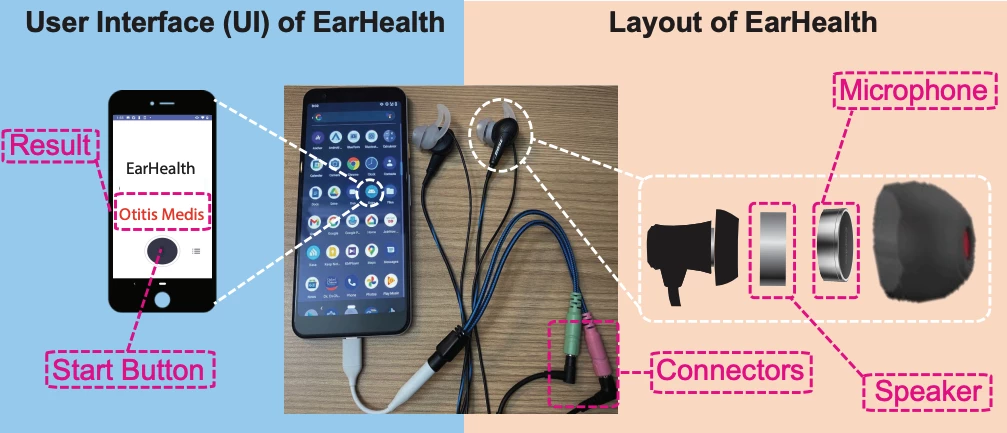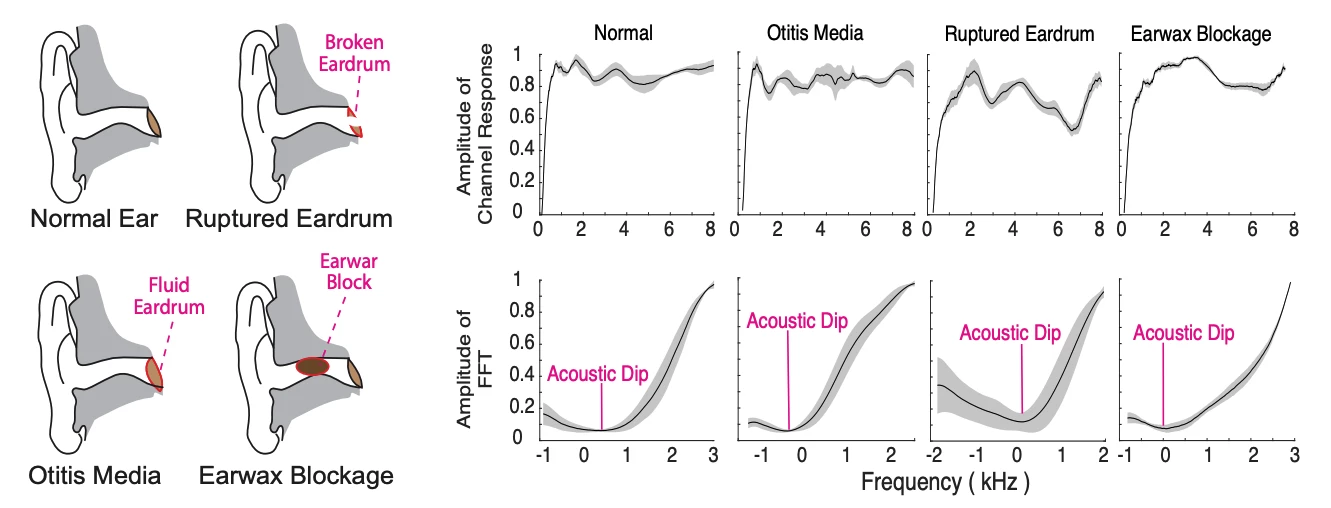A team led by researchers at the University at Buffalo has used Bluetooth earbuds and a deep learning AI system to diagnose three common ear conditions with a simple, non-invasive audio test that uses a sonar-like audio chirp to map out the ear structure.
The EarHealth system uses a set of Bluetooth earbuds, augmented with inward-facing microphones, connected to a smartphone app. It sends a chirping audio signal into the ear, then the microphones record how that signal reverberates through the ear canals, enabling the system to create a profile of each user's unique inner ear shape.
A reading is taken while the user is healthy, to establish a baseline, and then the same test is run periodically to look for changes. In human trials using 92 volunteers, the system was able to make diagnoses of three common ailments that alter the ear's geometry, just by checking for changes in the inner ear geometry, to an accuracy of 82.6%.

The three conditions it identified were earwax blockage, ruptured eardrums, and a common ear infection known as ostitis media. And in many cases it was able to identify them long before they presented as serious problems.
“With EarHealth, we have developed what we believe is the first-ever earbud-based system that monitors ear health conditions in an effective, affordable and user-friendly way,” said Zhanpeng Jin, PhD, lead author on a study published by the Association for Computing Machinery (ACM). “Because it has the potential to detect these conditions very early, it could greatly improve health outcomes for many people.”

The researchers say they're working to improve the accuracy of the system, by checking how ear hair, historical eardrum inflammation and other factors might play into readings. But the system looks to be effective, affordable and user-friendly enough to achieve widespread adoption for regular, super-quick ear checkups.
Source: University at Buffalo





